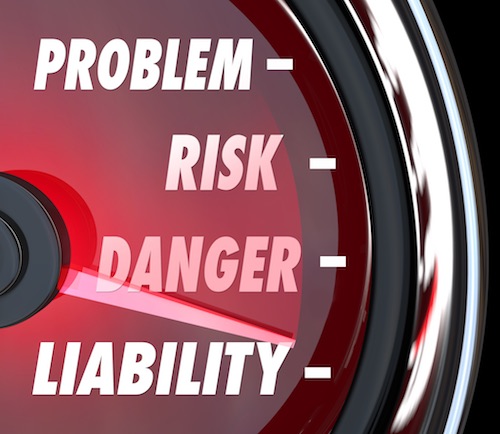IPWatchdog LIVE 2022 Panelists Talk Venue and Villains in the Patent World
“A company could have huge investments in Western Texas, thousands of employees within the district, and then they’ll win an argument on mandamus in which the Federal Circuit finds that it’s an abuse of discretion to say that it’s convenient to litigate there.” – Nicholas Matich, McKool Smith
From far left: Joan Archer, Scott McKeown, Nicholas Matich, Chad Pannell.
The gamesmanship that plays out on both sides of the “v” was on the examination table during “Gaming the Patent Litigation System: Value, Venue, Verdicts & Villains,” one of the panels taking place on the first day of IPWatchdog LIVE 2022. Though the panel included lawyers primarily representing either patent owners or district court defendants and Patent Trial and Appeal Board (PTAB) petitioners, the speakers offered agreement on certain issues in the current iteration of the U.S. patent system that should be addressed to reduce uncertainty for all litigants.
Is the PTAB Taking Care of Patents with Warts, or Throwing Baby Out with Bathwater?
The PTAB was an early topic of discussion during this panel after Joan Archer, Ph.D., General Counsel of AGI Digital and the panel’s moderator, asked whether the availability of the PTAB should be seen as the villain creating too many opportunities for gamesmanship in the patent process. This particular question did elicit some varied responses from the panel. Scott McKeown, Partner and Chair of the PTAB Group at Ropes & Gray, noted that while the PTAB may be statutorily enabled to achieve faster results, in practice the Board had already been engaging in post-issuance validity determinations through inter partes and ex parte reexamination proceedings. The faster path to a validity determination through America Invents Act (AIA) trials has produced certain behavioral changes in patent plaintiffs, McKeown acknowledged. “Prior to the PTAB, plaintiffs would ask for a couple hundred-thousand-dollar settlement for an exceedingly weak patent that has all of these warts,” he said. “Now, some companies that are my clients will get an email from a patent owner saying, ‘Hey, we’ll take $20,000 to settle. Depending on what side of the equation you’re on, that’s either a good thing or a bad thing.’”
Nicholas Matich, Principal at McKool Smith acknowledged that there were some patents out there deserving of validity challenges but cautioned that the PTAB does get used in inappropriate ways. Matich cited not only the recent gamesmanship at play in the inter partes review (IPR) proceedings challenging billion dollar patents owned by VLSI Technology, but also alluded to the Kyle Bass IPR proceedings filed in conjunction with short selling the stock of companies whose patents were challenged. As patents are an inherently probabilistic right, Matich noted, the alternative avenues for invalidity determinations in district court and at the PTAB create a much weaker patent right because that patent right now has a significant chance of being challenged multiple times.
“I represent patent owners who have to pay twice: they pay to get their patent, and then they pay to keep their patent, and I wonder if we’re throwing the baby out with the bathwater,” said Chad Pannell, Partner at AddyHart. Pannell noted that some of his patent owner clients have gone to the PTAB themselves to get their patent rights confirmed through reexamination proceedings. Providing perspective from the side of in-house counsel, Archer, who has served time as general counsel for a smaller startup acquired by a larger corporation, offered a hypothetical example of a small startup who wants to invest in intellectual property but is then blindsided by a PTAB petition from a competitor. As a result, what could have been a disruptive startup in a valuable industry sector who invested their relatively scarce resources into a patent budget and ends up bemoaning the fact that they didn’t pursue the trade secret route instead.
Better Consensus Among Panel Members on PTAB Standing Requirements
Some better consensus was reached among the panel members on the subject of whether the PTAB to have a standing requirement of sorts. Each of the panel members agreed that this approach should be considered, including McKeown, who represents a number of PTAB petitioners but acknowledged that extortion artists like OpenSky, which filed petitions on the back of VLSI’s billion-dollar verdict against Intel, should be quelled. “That shouldn’t be happening and the Patent Office should be sanctioning those folks,” he said, adding that the Patent Office already has the power to enter such sanctions against nefarious actors.
Though McKeown acknowledged that the motives of other firms like Patent Quality Assurance (PQA), another PTAB petitioner challenging VLSI’s valuable patent claims, should potentially be questioned under some form of standing requirement, he noted that standing requirements at the Federal Circuit have hurt the prospects of firms like United Technologies, which sought freedom to operate in the gas turbine sector through PTAB filing activity a few years ago. “If you have the resources to compete and the competitor’s patent is valid, then you can’t compete, but if they aren’t valid, that’s good for the public’s benefit because you do want more than one jet engine manufacturer,” McKeown said.
Another area of common ground among the panelists was the belief that so-called “mega-verdicts” handed out in U.S. district court are not driving an influx of IPR petitions at the PTAB. McKeown felt that the model of challenging patents simply to nix major verdicts in district court ultimately won’t be successful, citing the example of hedge funds manipulating stock price through PTAB petitions, which ultimately didn’t have lasting effect. While Matich did not feel as though the patent system was seeing an influx of OpenSky and PQA-style petitioners, he attributed that largely to the public scrutiny that the actions of such firms have garnered. Pannell agreed that mega-verdicts haven’t been driving PTAB petitions but noted that such petitions are often popular because of cost-benefit analyses performed by firms who want a cheaper avenue towards patent invalidity and judges who have more technical knowledge than the average U.S. district court judge.
Applying 20th Century Law to 21st Century Facts in the Venue Context
In the U.S. district court context, Archer asked the panelists to consider whether venue was the villain of patent system gamesmanship. Pannell opined that the Federal Circuit has seemingly been crafting venue rules unique to patent law in recent years. “A company could have huge investments in Western Texas, thousands of employees within the district, and then they’ll win an argument on mandamus in which the Federal Circuit finds that it’s an abuse of discretion to say that it’s convenient to litigate there,” Matich said. McKeown suggested that some bright line location-based rules could improve the situation, but Archer noted that many companies are under pressure to hire cheaper developers and product leads outside of the country, especially in the software industry, making bright line rules more difficult.
“With venue, I think we’re at a stage of the legal system where we’re applying 20th century law to 21st century facts,” said Pannell, who noted that 120 years ago, U.S. courts were having similar struggles in law related to automobile patent cases. Pannell added that the increased pressures of large dockets at U.S. district courts have made it difficult for judges who have an interest in taking on patent cases to do so without seeing their caseloads increase dramatically. He noted that, in the last 30 years, the number of patent cases filed in U.S. district court has increased three-fold while most district courts have maintained essentially the same number of active judge positions during that time. Pannell noted that the Northern District of Georgia, which includes Atlanta, where he lives, has not received a new active judge slot since the Carter Administration, despite the fact that Atlanta has grown tremendously during that time. “I think that there are good judges out there who enjoy patent cases, who are good jurists, but just don’t have the time for those cases,” he said.






